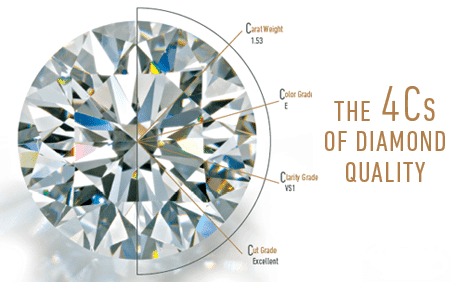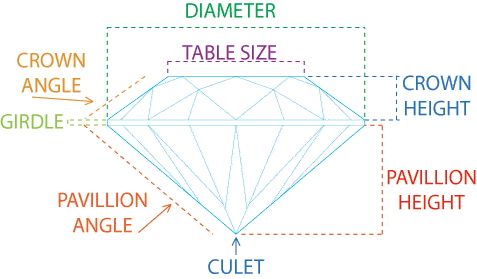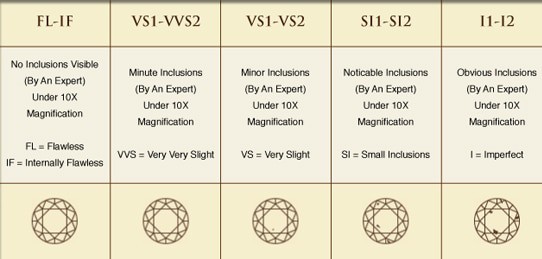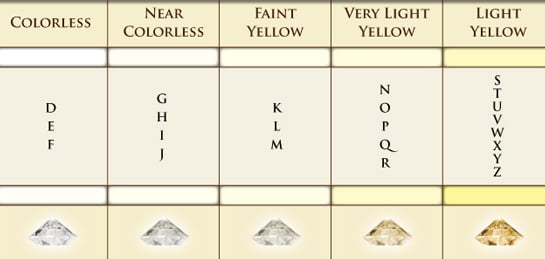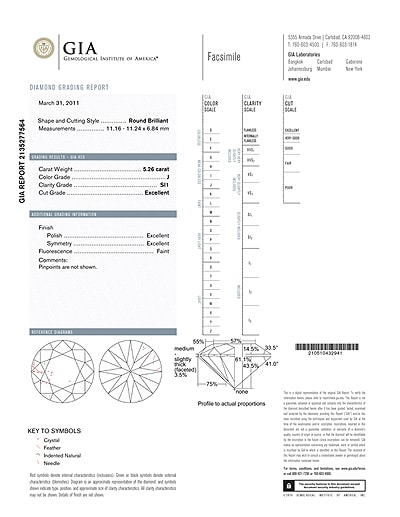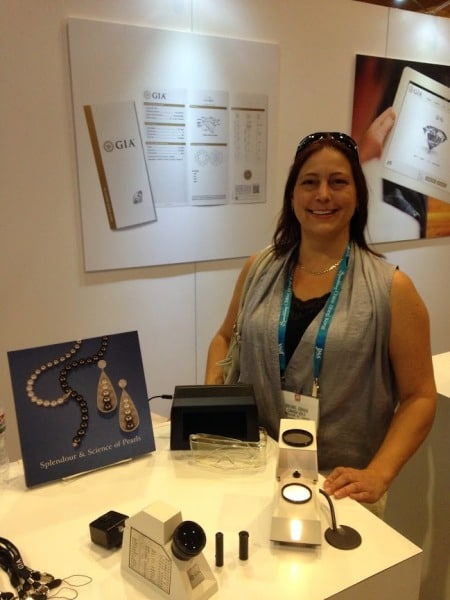A famous Marilyn Monroe quote says “diamonds are a girl’s best friend.” Then there are some who will say that women are complicated. So does that mean diamonds are complicated too?
Most of the value in diamond jewelry is the diamond itself, and evaluating diamonds is not very straightforward because slight differences (differences too small to see with the naked eye) can differentiate the price from one diamond and another quite significantly. In other words, perhaps diamonds are as complicated as girls, and Marilyn Munroe has been on to something all this time. There is a good reason why the diamond industry has certified gemologists in labs to grade diamonds.
Unfortunately for the average person, a gemologist is not always available (but you can book an appointment with our Vancouver gemologist today by calling 604-876-4653). If you’re planning on investing in jewelry with diamonds in it, like an engagement ring, read this simple guide to help you better understand what you need to know about buying diamonds.
Starting with the 4 C’s—Carat, Cut, Clarity, and Colour—we will help give you a better understanding of the anatomy of diamonds and how they are graded.
Carat
Carat is the most common thing we think about when the topic of diamonds comes up. Carat is a unit of weight used to measure diamonds. The word comes from the Greek word “carob” which is a plant seed that was used to weigh against gemstones because of their relatively uniform weight. The carat system was eventually standardized where one carat is fixed at 0.2 grams.
Although carat measures the diamond’s weight, it can generally determine the diamond’s size. Here is a chart of “round” diamonds showing their carat and their relative size in millimeters.
As you go up in carat, the price increases exponentially because diamonds over one carat are far rarer. A two carat diamond is worth more per carat than a one carat diamond of equal grade.
What carat is right for you (or your special someone)? If you’re considering an engagement ring, according to www.adiamondbuyingguide.com, in 2013 the average size of the center diamond was 1.1 carats. If you would like to get a better comparison of different diamond sizes, check out this Diamond Size Chart.
Cut
Often we think of “cut” as the shape or style of the diamond. In fact, shape is entirely different (and will be explained later). Cut actually refers to the “reflective qualities” and is what is graded when a diamond is certified. The quality of the cut determines how much light is reflected when it enters the diamond. The reflected light is commonly known as the diamond’s brilliance. The pictures below show the common features of a cut diamond and how light enters different cut variants.
Cut grades go from Ideal, Excellent, Very Good, Good, and then Fair & Poor, where ideal cuts maximize the amount of light reflected, and fair & poor cuts only reflects a small proportion of the light that enters them.
Clarity
Grades of clarity assess the overall flaws (blemishes and inclusions) of the diamond. All natural diamonds contain some sort of flaws, hence why flawless diamonds are incredibly rare, and thus incredibly expensive. Blemishes are flaws you can see on the surface, like chips and scratches, and inclusions are flaws found inside the diamond, like bubbles, cracks, and mineral flecks.
The following clarity grades are under 10x magnification (inclusions in grades F through VS are NOT visible to the naked eye):
Colour
We think of diamonds as being clear like glass or appearing white because of the light they capture. When gemologists grade diamonds on colour, they are actually looking for either the presence or absence of colour—the less colour apparent to the eye, the higher its value. Naturally coloured diamonds are an exception to this rule, because they are unique and extremely rare. Diamonds are graded from D (colourless) all the way to Z (Light Yellow):
The more colourless the diamond, the more it will emphasize its brilliance made by the diamond’s cut.
The 5th “C”: Certificates
Certificates are a grading report of your diamond’s 4 C’s conducted by a qualified gemologist using special equipment. This is to ensure that what you’re paying for is what you’re getting. Because the 4 C’s are often impossible to recognize to the untrained eye, it’s important to make sure a professional has gone over your diamonds. Most certified diamonds are done by GIA (Gemological Institute of America) or AGS (American Gem Society) and will look like this:
Diamonds are an expensive investment. The smallest detail could drastically change its value compared to what you paid for it, and you wouldn’t even know. If you’re buying diamonds or diamond jewelry, make sure it comes with a certificate!
Shape (Style)
Earlier we spoke of cut diamonds referring to the reflective qualities, not its shape or style. The diamond shape doesn’t reflect its value as much as the 4 C’s, but it is still something to consider when purchasing your diamond jewelry. Depending on your taste, there are many different cut shapes to choose from:
(Note that a one carat heart diamond will weigh the same as a one carat round diamond, but it does not mean that they will be the exact same size)
Now that you know the basics of diamonds, you can go out and research what diamond is best for you. BlueNile.com is a perfect place to start to check out diamond prices based on the four C’s you just learned about. Or, if you wish to speak to us directly about your diamonds, call 604-876-4653 and book an appointment with our very own gemologist – Rachel Cohen. Here she is at the JCK Jewelry Show in Las Vegas June 2014.


